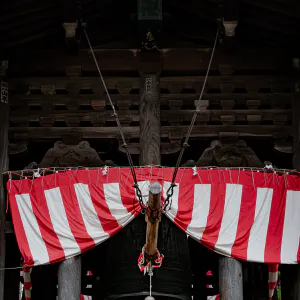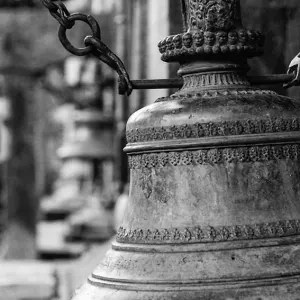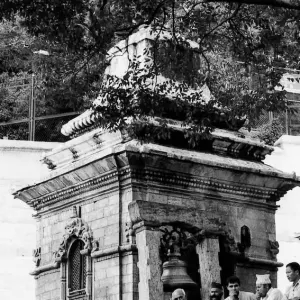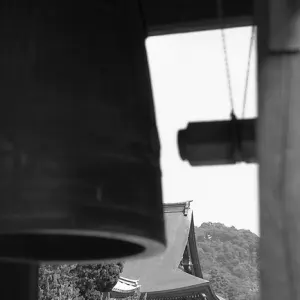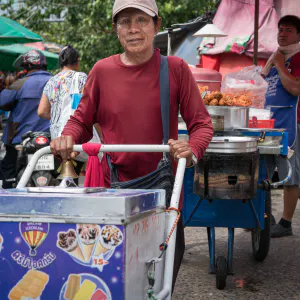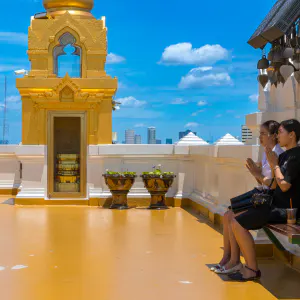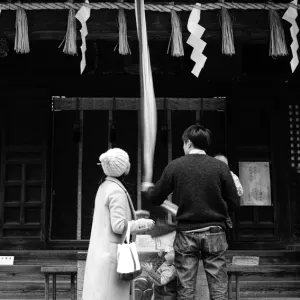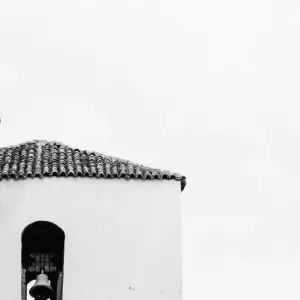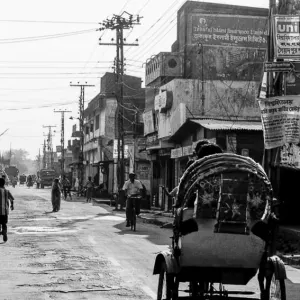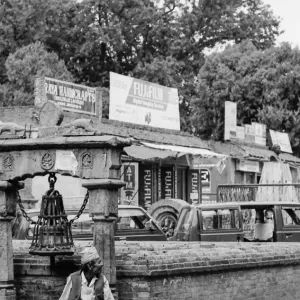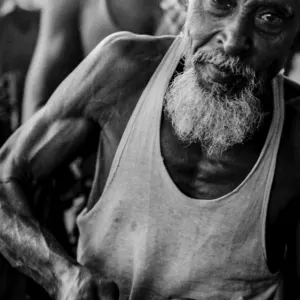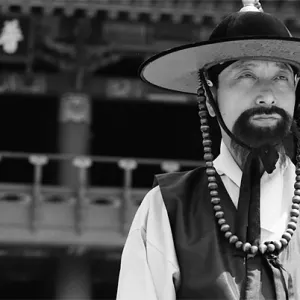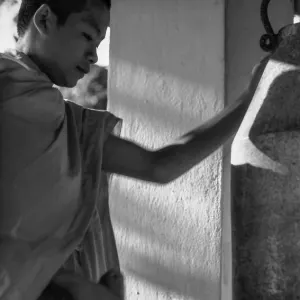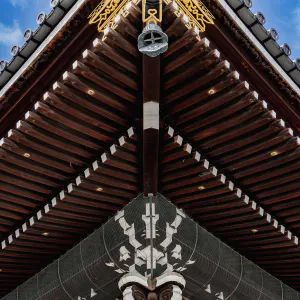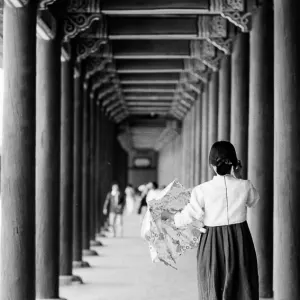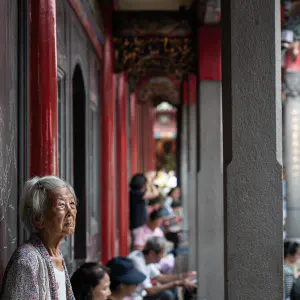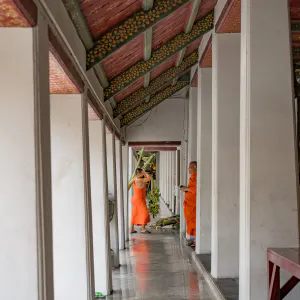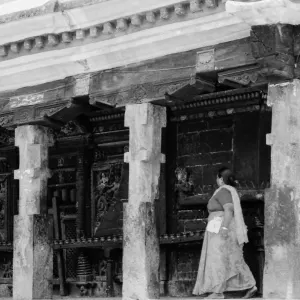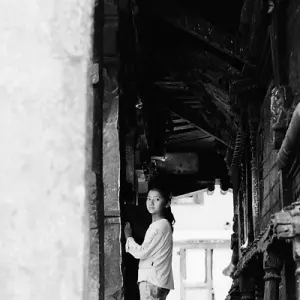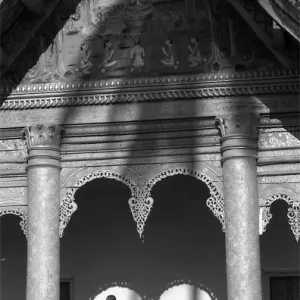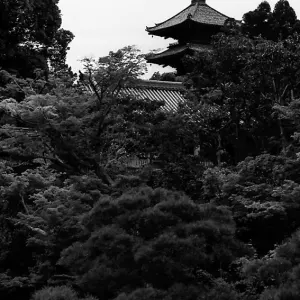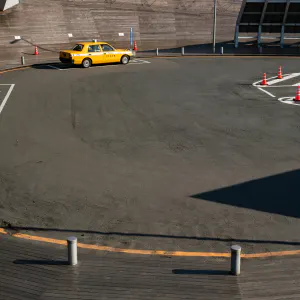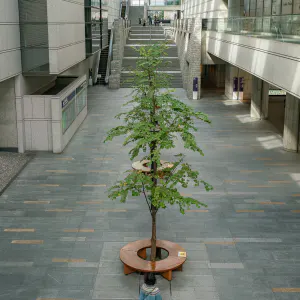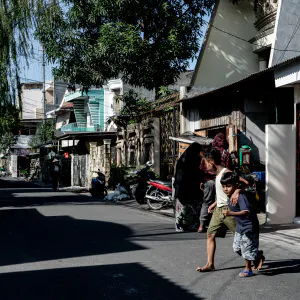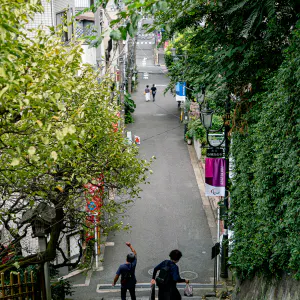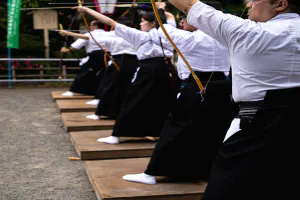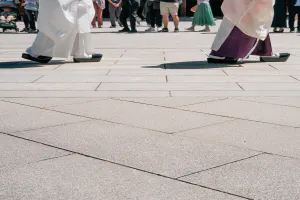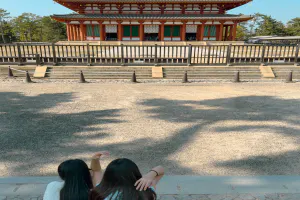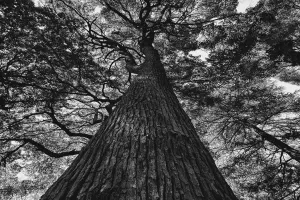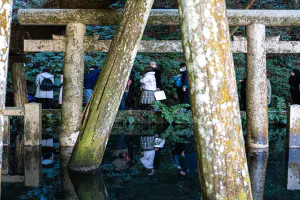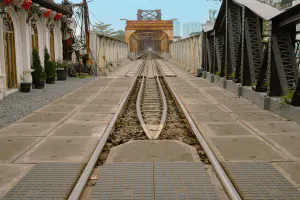A small temple bell was hung in the corridor connecting the Amida Hall and the Goeido Hall

It must have been unexpectedly difficult to communicate with the people around you before the practical use of telephones and wireless technology, let alone the Internet. If you had a smartphone, you could just send a message at once, or if you didn't have a smartphone, you could just call someone on the phone.
In the Muslim world, the first thing that needs to be communicated to the surrounding area is the beginning of the prayer. There are five daily prayers: the early morning prayer, the prayer after noon, the late afternoon prayer, the prayer after sunset, and the prayer before going to bed at night. The call to prayer, called Adhan, is now broadcast over speakers. But in the past, people used to call out loudly from the top of the minaret so that it would echo as far as possible.
It would have been the same here at Nishi Honganji Temple in Kyoto to let people know that a memorial service or ceremony was about to begin. As I walked along the corridor leading from the Goeido Hall to the Amida Hall, I looked to the side and saw a bell hanging on the building opposite. It was not that big, so it might be a summoning bell. If it was a summoning bell, it would be struck at the start of a Buddhist memorial service or ceremony. Even now, with the spread of the Internet and wireless communication, Nishi Hongan-ji still rings this bell in a fixed format to let people know the start of a memorial service or ceremony.
| Apr 2021 KYOTO STILL LIFE | |
| BELL CORRIDOR KYOTO CITY ROOF TEMPLE WORLD HERITAGE SITE |
PHOTO DATA
No
11872
Shooting Date
Feb 2020
Posted On
April 10, 2021
Modified On
August 24, 2023
Place
Nishi Honganji, Kyoto
Genre
Still Life Photography
Camera
SONY ALPHA 7R II
Lens
ZEISS BATIS 2/40 CF


